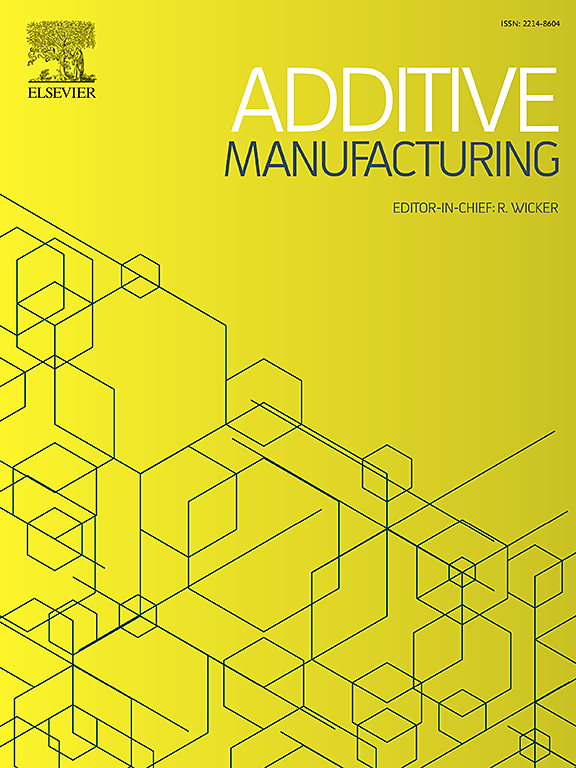4D insight into the defect evolution of additively manufactured ceramics during debinding and sintering
IF 11.1
1区 工程技术
Q1 ENGINEERING, MANUFACTURING
引用次数: 0
Abstract
Defects emerging in the additive manufacturing process can substantially influence the mechanical properties of ceramics. The actual evolution of these defects during manufacturing has not been in-situ observed, making precise control over them a considerable challenge. This study marks the first observation of defect emergence and evolution during the debinding and sintering of vat photopolymerization (VP) additively manufactured ceramics, facilitated by a specially developed high-temperature in-situ computed tomography (CT) technique. Defects at various temperatures were visualized and underwent quantitative analysis. Their temperature-dependent characteristics, spatial distributions, and evolutionary dynamics of defects among the ceramic, were discussed in detail. This work offers a 4D insight into the defect evolution of VP additively manufactured Al2O3 ceramics during their debinding and sintering processes for the first time, which is expected to provide ideas for the precise control of defects and enhances the mechanical properties in the future.
增材制造陶瓷在脱粘和烧结过程中缺陷演变的4D洞察
增材制造过程中出现的缺陷会严重影响陶瓷的力学性能。在制造过程中,这些缺陷的实际演变并没有被现场观察到,这使得对它们的精确控制成为一个相当大的挑战。这项研究标志着首次观察到还原光聚合(VP)增材制造陶瓷在脱粘和烧结过程中缺陷的出现和演变,这是由一种专门开发的高温原位计算机断层扫描(CT)技术实现的。对不同温度下的缺陷进行了可视化并进行了定量分析。详细讨论了它们的温度依赖特性、空间分布和陶瓷中缺陷的演化动力学。本研究首次对VP增材制造的Al2O3陶瓷在脱粘和烧结过程中的缺陷演变进行了4D观察,有望为未来缺陷的精确控制和力学性能的提高提供思路。
本文章由计算机程序翻译,如有差异,请以英文原文为准。
求助全文
约1分钟内获得全文
求助全文
来源期刊

Additive manufacturing
Materials Science-General Materials Science
CiteScore
19.80
自引率
12.70%
发文量
648
审稿时长
35 days
期刊介绍:
Additive Manufacturing stands as a peer-reviewed journal dedicated to delivering high-quality research papers and reviews in the field of additive manufacturing, serving both academia and industry leaders. The journal's objective is to recognize the innovative essence of additive manufacturing and its diverse applications, providing a comprehensive overview of current developments and future prospects.
The transformative potential of additive manufacturing technologies in product design and manufacturing is poised to disrupt traditional approaches. In response to this paradigm shift, a distinctive and comprehensive publication outlet was essential. Additive Manufacturing fulfills this need, offering a platform for engineers, materials scientists, and practitioners across academia and various industries to document and share innovations in these evolving technologies.
 求助内容:
求助内容: 应助结果提醒方式:
应助结果提醒方式:


